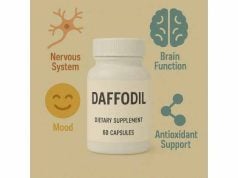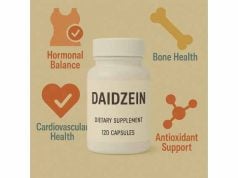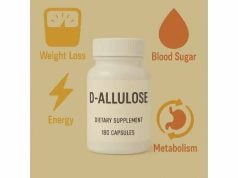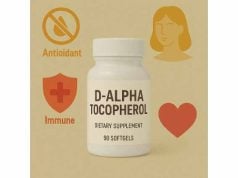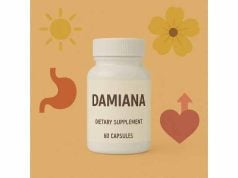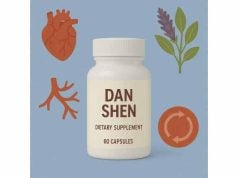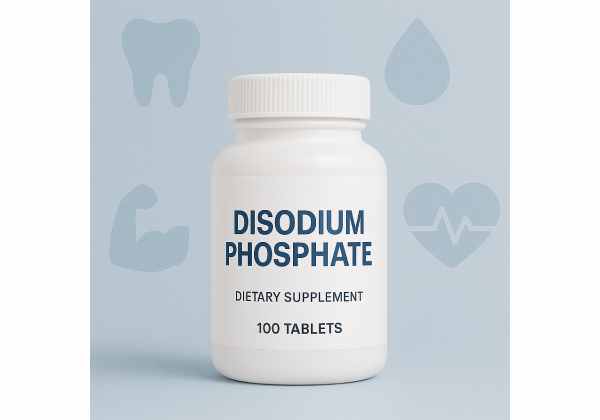
Disodium phosphate (also called sodium phosphate dibasic or E339(ii)) is a common food additive, a laboratory buffer, and—in select cases—a supplemental source of phosphorus and sodium. In foods, it stabilizes texture, controls acidity, and improves melt and moisture. In medicine, various sodium phosphate salts appear in bowel preparations and IV formulations; as a supplement, disodium phosphate occasionally appears in mineral blends or athletic “phosphate loading” protocols. Because phosphate intake already runs high in many diets, the question is not only “what does it do?” but “when is more a good idea?” This guide covers how disodium phosphate works, the most discussed benefits and limits (including sports and digestion), practical dosing, safety pitfalls, who should avoid it, and how to evaluate products—so you can make an informed, evidence-based decision.
Essential Insights for Disodium Phosphate Users
- Can stabilize food texture and supply bioavailable phosphate; supplemental use is niche and goal-specific.
- Typical supplemental ranges: 250–750 mg disodium phosphate (≈55–165 mg elemental phosphorus) once or twice daily; athletic loading uses short courses only.
- Major risks include hyperphosphatemia and sodium load; bowel-prep sodium phosphate should never be used as a “supplement.”
- Avoid if you have chronic kidney disease, are on phosphate-restricted diets or binders, or have uncontrolled hypertension or heart failure.
Table of Contents
- What is disodium phosphate and how it works
- Does disodium phosphate offer real benefits?
- How to take it: dosage, timing, and stacking
- Common mistakes, better alternatives, and label tips
- Side effects, who should avoid it, and interactions
- What the research shows today
What is disodium phosphate and how it works
Names and forms. Disodium phosphate is the dibasic form of sodium phosphate (Na₂HPO₄). It’s sold as anhydrous or as hydrates (commonly dihydrate, heptahydrate, or dodecahydrate). On labels you might see sodium phosphate dibasic, disodium hydrogen phosphate, or the additive code E339(ii). It often appears alongside monobasic (NaH₂PO₄) and tribasic (Na₃PO₄) salts to fine-tune pH and buffering capacity.
What it supplies. By mass, anhydrous disodium phosphate is roughly 21–22% elemental phosphorus and 32–33% sodium. As a rule of thumb, 1,000 mg disodium phosphate ≈ 220 mg phosphorus and ≈ 320 mg sodium. This matters for two reasons: (1) most adults already meet or exceed their daily phosphorus needs through food, and (2) many people limit sodium for blood pressure or fluid reasons.
Why manufacturers use it. In foods, disodium phosphate functions as a buffer, emulsifier, stabilizer, and chelating agent. It improves melt in processed cheese, retains moisture in meats, stabilizes foam in powdered beverages, and helps frozen foods hold texture. In the body, phosphate is essential for ATP, cell membranes (phospholipids), bone mineral (hydroxyapatite), and acid–base balance. Because inorganic phosphate salts are highly bioavailable (often ≈70%), additives can raise total phosphorus exposure more than many people realize.
Supplement and clinical contexts. You will find disodium phosphate in three main contexts:
- Dietary supplements: Occasionally included to add phosphorus (and sodium) to multivitamin–mineral formulas or electrolyte blends. Some athletes use short “phosphate loading” blocks aiming to boost aerobic performance through mechanisms such as increased 2,3-BPG in red blood cells (which may enhance oxygen unloading), increased buffering via hydrogen phosphate, and subtle changes in cardiac output during submaximal work.
- Bowel preparations and laxatives: Not supplements. Oral and rectal sodium phosphate drug products are used for colon cleansing or constipation under specific instructions; taking extra doses can cause dangerous electrolyte derangements and kidney complications.
- Clinical nutrition/IV: Phosphate salts are used in parenteral nutrition or IV fluids under medical supervision—not for self-supplementation.
Bottom line: Disodium phosphate is a versatile phosphate and sodium source with legitimate industrial and medical roles. For everyday consumers, it makes sense primarily as a short, measured experiment for very specific goals—not as a default “more is better” mineral add-on.
Does disodium phosphate offer real benefits?
For general health: Most adults do not need extra phosphorus. The recommended intake for adults is 700 mg/day of phosphorus from all sources, and typical intakes already meet or exceed this level—especially when a diet includes dairy, meat, fish, legumes, nuts, and grains. Because phosphate additives are highly absorbable, processed foods can substantially increase total exposure. If your overall diet is balanced and protein-adequate, supplemental phosphorus rarely delivers tangible everyday benefits.
For digestive comfort: Disodium phosphate may appear in antacid blends for buffering, but dedicated products (calcium carbonate, alginates, or physician-directed acid reducers) generally have stronger evidence. Importantly, sodium phosphate bowel preparations and laxatives are medications, not supplements; exceeding label directions—even by one extra dose—has been linked to serious electrolyte shifts, dehydration, and acute kidney injury in vulnerable users. Do not repurpose bowel-prep sodium phosphate as a digestive aid.
For exercise performance: “Phosphate loading” is a niche strategy among trained athletes. Small, modern trials report modest physiologic effects (e.g., lower heart rate at a given workload, improved stroke volume, higher oxygen pulse) and occasionally small performance gains in controlled settings. Protocols often use ≈50 mg/kg fat-free mass per day of sodium phosphate divided across the day for 3–6 days before an aerobic test. Results are mixed—some individuals respond, others don’t. If performance improves, changes are usually modest (for example, shaving time off a cycling time trial under lab conditions). As with any ergogenic, context (training status, task type, nutrition) matters.
For phosphorus repletion: True phosphorus deficiency is uncommon outside specific conditions (refeeding after undernutrition, alcohol use disorder, severe vitamin D deficiency, poorly controlled diabetes, or certain medications). If correction is needed, clinicians tailor the form, route, and dose to lab values and underlying cause. This is not a DIY use case.
Net assessment: For most people, disodium phosphate is not a daily wellness supplement. Potential upside may exist for short, carefully dosed athletic blocks in trained individuals and in clinically indicated situations under medical supervision. In the general population, the bigger issue is often too much phosphate from additives, not too little.
How to take it: dosage, timing, and stacking
Before you start: Confirm why you’re taking it, add up your baseline phosphate and sodium exposure, and check your health status (especially kidney, heart, and blood pressure). If you have chronic kidney disease (CKD), are on phosphate binders, or have been told to limit phosphate or sodium, do not self-supplement.
Everyday supplement use (non-athlete): If your clinician suggests a brief trial—for example, to top up a low-phosphate intake while dietary changes take effect—typical products provide 250–750 mg disodium phosphate per capsule or serving. Practical starting points:
- Conservative start: 250 mg once daily with a meal for 3–5 days.
- If needed: Increase to 250–500 mg twice daily (breakfast and lunch).
- Stop if no benefit after 2–3 weeks, or sooner if side effects occur.
Remember that 250 mg disodium phosphate ≈ 55 mg phosphorus and ≈ 80 mg sodium; the phosphorus (not just “phosphate”) is what counts toward nutrient totals.
Athletic “phosphate loading” (advanced use): For trained athletes working with a sports dietitian or coach, a common research-style protocol is ≈50 mg/kg fat-free mass per day of sodium phosphate (divided into 3–4 doses) for 3–6 days leading into key aerobic efforts. Practical notes:
- Divide doses with meals to reduce GI upset.
- Hydrate well; the sodium load is non-trivial.
- Keep other ergogenics stable (caffeine, nitrate, bicarbonate) so you can attribute changes.
- Track a performance metric (e.g., time trial, power at VT2) before and after.
- Cycle off after the block; this is not a year-round supplement.
Timing with other nutrients and meds:
- Calcium or magnesium taken concurrently can form insoluble salts and reduce phosphate absorption; if both are needed, separate by a few hours.
- Iron supplements are better taken away from large mineral doses to avoid competition.
- Vitamin D status increases intestinal phosphate absorption; high vitamin D plus high phosphate can push serum phosphate upward—another reason to avoid stacking multiple high-dose products without labs and supervision.
What not to do:
- Do not use oral sodium phosphate bowel-prep solutions or enemas as a supplement.
- Do not exceed label directions or “top up” with extra doses to chase a performance boost.
- Do not use if you have CKD, significant heart disease, uncontrolled hypertension, or edema unless a clinician is directly supervising.
Monitoring: If you continue beyond a short trial, ask your clinician about serum phosphate, calcium, PTH, and (if relevant) kidney function checks, especially if you use other high-phosphate products or have risk factors.
Common mistakes, better alternatives, and label tips
Mistake 1: Treating drug products as supplements. Sodium phosphate laxatives and bowel preps are regulated as drugs. Exceeding the labeled single dose or repeating doses within 24 hours has been linked to severe dehydration, electrolyte abnormalities (high phosphate, low calcium), heart rhythm problems, kidney injury, and—in rare cases—death. These formulations are not interchangeable with dietary supplements.
Mistake 2: Ignoring total phosphate exposure. Phosphate additives in processed meats, cheeses, baked goods, and beverages are highly absorbable and can add hundreds of milligrams per day. If you already eat a typical Western diet, you likely meet or exceed your phosphorus needs. Adding a disodium phosphate capsule on top can push intake higher without any benefit.
Mistake 3: Overlooking sodium. Each gram of disodium phosphate adds roughly 320 mg sodium. For people targeting 1,500–2,300 mg sodium/day, a couple of large capsules can be a meaningful chunk of the daily budget. If sodium control is a priority, consider non-sodium phosphate sources (when medically required) or solve the underlying dietary issue rather than supplementing.
Mistake 4: Chasing performance without structure. Phosphate loading shows mixed performance outcomes. If you want to experiment, use a finite block, collect baseline data (e.g., time to complete a set distance at fixed power/pace), keep caffeine/training constant, and evaluate objectively. If you see no improvement, discontinue.
Better alternatives depending on the goal
- General mineral support: For most, focus on balanced protein, dairy or fortified alternatives, legumes, nuts, and whole grains. This provides phosphorus with the right matrix of co-nutrients (calcium, magnesium, potassium).
- Digestive comfort: Discuss alginate preparations, H2 blockers, or PPI strategies with your clinician instead of self-selecting phosphate salts.
- Aerobic performance: Evidence is more consistent for carbohydrate periodization, caffeine (where appropriate), nitrate/beetroot in some populations, and sodium bicarbonate for specific high-intensity efforts. These can be combined with training blocks that target your limiting systems.
Label and storage tips
- Choose brands that disclose exact salt form, mg per serving, and elemental phosphorus provided; third-party testing (COAs) is a plus.
- Store tightly sealed in a cool, dry place to preserve stability.
- Watch for combination products that stack multiple phosphate salts (e.g., disodium plus dipotassium phosphate) without highlighting total phosphorus.
- Be wary of claims like “detox,” “alkalizing,” or “remineralizes instantly”—they are marketing, not evidence.
Quick math for planning
- If a product lists 600 mg disodium phosphate, expect roughly 130 mg phosphorus and 190 mg sodium per serving. Keep a running daily tally from food plus supplements to avoid overshooting your targets.
Bottom line: Most consumers are better served by diet tweaks and evidence-based aids matched to a clear goal. Use disodium phosphate only when it fits a specific, short-term, and supervised plan.
Side effects, who should avoid it, and interactions
Common effects (usually dose-related):
- GI upset (nausea, bloating, diarrhea), especially with larger single doses or on an empty stomach.
- Fluid retention or a modest rise in blood pressure due to sodium load.
- “Mineral taste” burps after high-salt capsules.
Serious risks (rare but important):
- Hyperphosphatemia (high blood phosphate) can lower serum calcium and trigger symptoms such as muscle cramps, tingling, or, at extremes, arrhythmias.
- Kidney strain or acute injury in people who overdose on sodium phosphate laxatives or bowel preps, are dehydrated, or already have kidney vulnerability.
- Electrolyte disturbances (calcium, sodium, potassium) during misuse of drug-strength sodium phosphate products.
Who should avoid disodium phosphate unless a clinician says otherwise:
- Chronic kidney disease (any stage) or a history of kidney stones related to phosphate;
- Heart failure, uncontrolled hypertension, or significant edema (sodium-sensitive);
- Hyperparathyroidism, hypocalcemia, or high baseline serum phosphate;
- Infants, children, pregnancy, and breastfeeding: only with clinician guidance;
- Anyone advised to follow a phosphate-restricted diet or who already uses phosphate binders.
Medication and nutrient interactions:
- Phosphate binders (calcium acetate, sevelamer, lanthanum): These are designed to reduce phosphate absorption; do not counteract them with supplements.
- Calcium, magnesium, aluminum antacids/supplements: Can bind phosphate and lower absorption; separate dosing by several hours if both are necessary.
- Vitamin D (and active analogs): Increases intestinal phosphate absorption; high vitamin D plus phosphate can push labs upward—monitor if you take both.
- ACE inhibitors, ARBs, diuretics, and NSAIDs: These drugs can influence kidney perfusion and fluid balance; while the risk is mainly for drug-strength sodium phosphate laxatives, it’s still wise to inform your clinician if you plan any phosphate supplement.
When to stop and seek care immediately:
- Severe, persistent abdominal pain; vomiting; dark urine; swelling of ankles/feet; drowsiness or dramatic fatigue; muscle cramps or tingling; signs of allergic reaction (hives, swelling, wheeze).
Environmental note: Do not dispose of concentrated phosphate products down household drains in large amounts. Follow local guidance to avoid contributing unnecessary nutrient load to waterways.
Bottom line: For healthy adults, short, modest trials are usually tolerated—but the risk rises sharply in kidney disease, with dehydration, and when drug-strength sodium phosphate products are misused. If in doubt, do not use without professional advice.
What the research shows today
Dietary needs and usual intake. Adults need about 700 mg/day of phosphorus. In the U.S. and Europe, most people meet or exceed this through food alone. Phosphate additives contribute meaningfully—often hundreds of milligrams daily—and are more bioavailable than many natural food sources. This context matters when judging whether a phosphate supplement adds value.
Food additive safety and limits. European risk assessors have set a group acceptable daily intake (ADI) for total phosphates from food additives of 40 mg/kg body weight/day (as phosphorus). Intake estimates indicate that heavy consumers—especially children—can exceed this ADI from foods alone. The practical takeaway is straightforward: additive phosphate intake already pushes exposure up; supplements should be used sparingly, if at all, unless medically indicated.
Regulatory status in foods. In the U.S., sodium phosphate salts (mono-, di-, and tribasic) are generally recognized as safe (GRAS) when used in accordance with good manufacturing practice as multipurpose food ingredients. GRAS does not imply safety at any dose in supplement megadoses or for drug use outside labeling.
Bowel-prep and laxative safety signal. National regulators warn that taking more than one dose in 24 hours of over-the-counter sodium phosphate drug products—or using them at all in certain high-risk populations—can cause dangerous electrolyte disturbances, dehydration, acute kidney injury, and rarely death. The highest risks include young children, older adults, people with kidney disease, or those using diuretics, ACE inhibitors, ARBs, or NSAIDs. Again: these are medications, not supplements.
Athletic performance data. Recent controlled studies in trained men using short-term sodium phosphate loading report physiological shifts—such as decreased heart rate at submaximal workloads, increased stroke volume, and improved oxygen pulse—and, in some protocols, small performance gains. Yet findings are heterogeneous, and not all athletes respond. Benefits, when present, appear in endurance-type tasks and under structured loading schedules (e.g., ~50 mg/kg fat-free mass/day for 6 days). Because protocols add a sodium load, careful hydration and blood pressure awareness are prudent.
Unanswered questions. We still need larger, longer, and more diverse trials to define (1) who benefits from phosphate loading, (2) whether specific sports or athlete profiles respond better, (3) safe long-term patterns for people with borderline kidney function, and (4) how dietary phosphorus, vitamin D, and calcium status modulate responses.
Bottom line: The clearest message in 2025 is caution. When phosphate intake from food additives is already substantial, disodium phosphate supplements should be used selectively, briefly, and with a plan—or avoided altogether in higher-risk groups.
References
- Phosphorus – Health Professional Fact Sheet 2023 (Overview and DRIs)
- Re-evaluation of phosphoric acid–phosphates – di-, tri- and polyphosphates (E 338–341, E 343, E 450–452) as food additives and the safety of proposed extension of use 2019 (Risk Assessment)
- § 182.1778 Sodium phosphate 2025 (Regulatory)
- FDA Drug Safety Communication: FDA warns of possible harm from exceeding recommended dose of over-the-counter sodium phosphate products to treat constipation 2014 (Safety Communication)
- Effects of Short-Term Phosphate Loading on Aerobic Capacity in Hypoxia 2022 (RCT/Exercise Physiology)
- Industrial Use of Phosphate Food Additives: A Mechanism Linking Intake to Health 2023 (Review)
Disclaimer
This article is educational and does not replace personalized medical advice, diagnosis, or treatment. Disodium phosphate can meaningfully increase phosphorus and sodium exposure and may be unsafe for people with kidney or heart disease, high blood pressure, or those using certain medications. Do not use sodium phosphate bowel-prep or laxative products as supplements. If you are considering any phosphate supplement, consult a qualified clinician, especially if you have chronic conditions or take prescription drugs.
If this guide helped you, please consider sharing it on Facebook, X (formerly Twitter), or your preferred platform, and follow us for future evidence-based articles. Your support helps us continue creating reliable, reader-first content.

